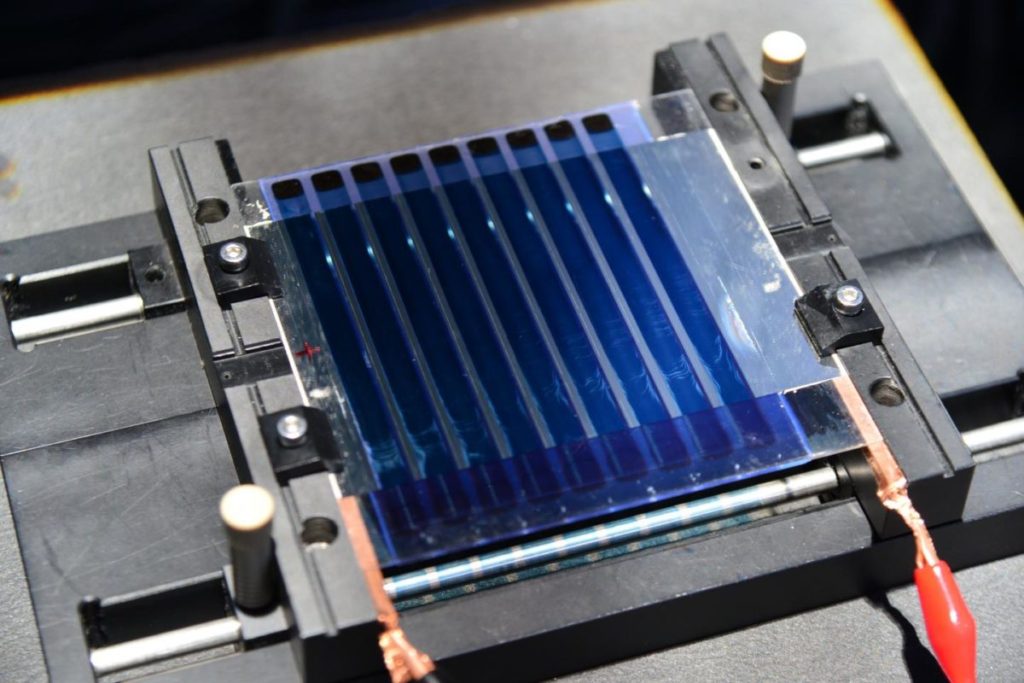More efficient large-area organic solar cells with spin coating

Researchers in South Korea have used the process to increase performance and the replicability of large-area organic cells. The method was used during film formation to speed up solvent evaporation.

Researchers from the Photo-electronic Hybrids Research Center at the Korea Institute of Science and Technology (KIST) have applied spin coating to the manufacture of large-area organic PV cells.
Low-cost spin coating applies a uniform film onto a solid surface using centrifugal force and a liquid-vapor interface. It is used in organic PV research during film formation to speed up solvent evaporation.
The researchers said spin coating enables bulk-heterojunction (BHJ) films for large-area organic cells which perform better and are more replicable than films produced without the process. “Commercially-available organic materials become easily crystallized, which makes them unsuitable for large-area solution processes,” the KIST group explained.
The solar cell developed by the researchers is based on PBDB-T, a polymer donor semiconductor material used in highly-efficient OPV [organic PV] devices and ITIC, an n-type acceptor which provides good alignment with low band-gap polymers for enhanced charge separation efficiency and reduced energy loss. “Such aggregated morphology of PBDB-T:ITIC is much improved, to optimal morphology for effective charge generation and transporting with a 50 degrees Celsius heating process,” the scientists said.
The KIST group said they could control the solvent evaporation rate and that the efficiency of their solar cell was higher than devices of the same kind with a large area. “As a result, [the] PBDB-T:ITIC photovoltaic module (active area 58.5cm2) prepared at 50 degrees Celsius showed much-enhanced efficiency of 9.3% … 5% [more than the] room temperature processed one,” they stated.
The cell is described in the paper Developement [sic] of highly efficient large area organic photovoltaic module: Effects of nonfullerene acceptor, published in Nano Energy and on the ScienceDirect website.

